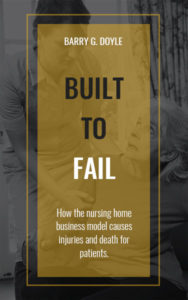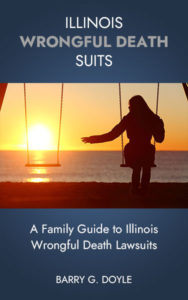One common reason that families make the decision to admit a loved one to a nursing home is that they are no longer safe to be left alone – not because of physical limitations, but because their mental state has deteriorated and they have gone missing or wandered.
Wandering is a very dangerous situation. Senior citizens who wander are prone to find themselves in very dangerous situations where they can be injured or killed. They may wander into a dangerous area like a rail yard or a construction site. They may encounter natural hazards such as bodies of water or wilderness areas where it is difficult to walk safely. They may wander into traffic or encounter unsafe weather conditions for which they are ill-prepared. They can find themselves the victims of criminal assaults. It is a very, very dangerous situation, indeed.
Wandering is a behavior which lends itself to the 24/7 supervision that nursing homes offer. However, just because someone has been admitted to a nursing home, that does not mean that the potential for that kind of behavior has been eliminated. In the nursing home setting, this is known as elopement.
The care planning process requires the nursing home to do a comprehensive assessment of the threats to the health and well-being of the resident, and given the serious consequences that are associated with a resident leaving the building, this is a specific area which is assessed during the comprehensive assessment.
There is no “gold standard” assessment for elopement risk (like the Braden Scale is for bed sores), but there are two key factors that really must be present for a resident to be considered a serious risk for elopement. The first of these is that the resident must have some degree of dementia or altered thought process. If a resident is capable of normal thought processes and evaluation of the risks to their own safety, they are unlikely to wander from the facility. The second of these is that the resident must be physically capable of leaving the facility. Residents who are bed bound, chairfast, or have severe mobility restrictions are unlikely to leave the facility (although residents in wheelchairs present some risk in that regard).
Past those two basic issues, there are a number of issues that are addressed in many (although not all) assessments of elopement risk:
- Is there a history of wandering? Having demonstrated that behavior once, it is more likely to be repeated.
- Do they voice intent to leave the facility? An announced intent to leave the facility is often a sign that the resident will attempt to do so.
- Does the resident discuss things that are not in the facility? A focus on things like people and objects that are familiar to them but not in the facility may prompt action to see those people and things.
- Are they agitated or do they demonstrated agitated behavior, pacing, or restlessness? All signs of a resident who is not comfortable being in a controlled environment in a nursing home.
Once a resident is identified during the assessment as being at risk for wandering or elopement, a care plan addressing that risk must be put into place. One of the common interventions would be to place the resident in a locked unit or a memory care unit where the staff is trained to be alert for this kind of behavior. Whichever unit they are placed in, the stairwells must be locked to avoid nursing home falls involving stairwells. Additionally, use of a wanderguard is a standard measure. This is a device which sets off an alarm when the resident leaves the building or their unit. Lastly, a psychiatric consult will likely be in order to determine whether there are medications which can address some of the underlying mental health issues which are at the bottom of the drive to leave the facility.
Once an elopement care plan is put into place, the rest of the care planning process remains in play: it must be communicated to the staff who must implement it on a day-to-day, shift-to-shift basis. Many of the injuries from elopement and wrongful deaths associated with it occur because an otherwise suitable care plan was not carried out.
Finally, the effectiveness of the care plan must be evaluated on an ongoing basis and revised as needed. This is true of care planning with all areas of risk to the resident including nursing home falls, bed sores, and choking, but it is especially true of residents who are risk of eloping because they have a singular drive to get out of the facility which may drive them to actively find ways to defeat the interventions in the care plan.
Elopement represents a serious threat to the health and well-being of certain classes of nursing home residents who are at risk for that kind of behavior. This is a fact that is well-recognized in the nursing home industry and is something that can only be properly addressed through proper assessments and care planning.
If you have a parent or other loved one who has been injured or killed as a result of eloping or wandering from the nursing home, contact our experienced Chicago nursing home lawyers for a proper investigation of the facts surrounding the incident and a full evaluation of your rights and options.


